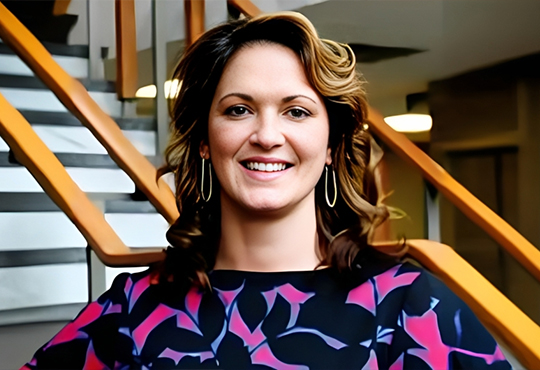Building Successful Study Abroad Programs: Best Practices
 Melissa Holland, Senior International Officer, Alfred State College - SUNY College of Technology, in an interaction with Higher Education Review, shared her views and thoughts on the most common challenges faced by students in study abroad programs and more.
Melissa Holland, Senior International Officer, Alfred State College - SUNY College of Technology, in an interaction with Higher Education Review, shared her views and thoughts on the most common challenges faced by students in study abroad programs and more.
Melissa brings 13 years of experience within the State University of New York system, including 7 years at Alfred State and 6 years at Buffalo State. As a Senior International Officer, she leads international student enrollment management, oversees global partnerships, and directs study abroad programs. Melissa has successfully facilitated study abroad experiences for over 1,000 U.S. students across Europe, South and Central America, Africa, and Asia.
What are the key factors to consider when selecting partner institutions for a study abroad program?
First and foremost, academic alignment is critical. We need to ensure that the courses offered abroad match the rigor and learning objectives of the home institution so that credits transfer smoothly. Beyond academics, we also evaluate the institution’s reputation, student support infrastructure, safety protocols, and the potential for long-term collaboration. Cultural fit and shared values between institutions can really make or break the success of a partnership.
How can study abroad programs be designed to ensure cultural immersion while maintaining academic rigor?
Cultural immersion doesn’t happen by accident—it has to be deliberately woven into the fabric of the program. We do this by integrating local faculty, encouraging homestays or community-based living, and creating opportunities for fieldwork and experiential learning. At the same time, maintaining academic rigor involves ensuring the curriculum is robust, assessments are meaningful, and students are held to high standards. When you design programs thoughtfully, students can engage deeply with a culture while still meeting their academic goals.
How can institutions ensure that study abroad programs are accessible and inclusive for all students, regardless of background or financial status?
Accessibility begins with acknowledging that barriers exist—to students who face financial, familial, or logistical barriers to travel. We combat these through scholarships, flexible program models, and intentional outreach to underrepresented student populations.
Short-term study abroad programs are popular for their flexibility and affordability, but their limited duration can restrict cultural immersion and academic depth. Integrating Collaborative Online International Learning (COIL) into these programs significantly enhances both their impact and accessibility.
COIL connects students and faculty across countries for virtual collaboration before, during, or after travel. When paired with short-term programs, COIL builds intercultural relationships and academic engagement in advance, making the in-country experience more meaningful. This extended timeline fosters deeper learning and reflection, turning a brief trip into a sustained global learning journey.
COIL also expands access by offering low-cost international engagement to students who face financial, familial, or logistical barriers to travel. Hybrid models—combining virtual and physical mobility—allow more students to participate in global learning while still offering in-person experiences to those who can travel.
By embedding COIL into short-term study abroad, institutions can maximize learning outcomes and broaden participation, advancing both quality and equity in global education.
What are some of the most common challenges faced by students in study abroad programs, and how can these be mitigated?
Students often encounter culture shock, academic adjustment, and feelings of isolation. Language barriers and unfamiliar systems can also be daunting. We prepare them through comprehensive pre-departure orientations, ongoing support while abroad, and re-entry programs that help them process their experiences. Encouraging reflection and building resilience are key. It's about equipping students not just to survive but to thrive in new environments.
What partnerships (e.g., with local businesses, NGOs, etc.) can enhance the effectiveness of a study abroad program?
Local partnerships are incredibly valuable. Collaborations with NGOs, community organizations, and businesses can provide internships, service-learning projects, and cultural exchange opportunities. These partners offer on-the-ground insights and give students hands-on experience that complements their academic learning. They also promote mutual benefit—students gain practical insights, and local partners benefit from global perspectives and skills.
How should safety and health concerns be integrated into the planning and implementation of study abroad programs?
Safety and health should be considered from day one, not as an afterthought. This includes risk assessments, emergency protocols, and comprehensive insurance coverage. Students need to be educated about local laws, healthcare systems, and cultural expectations. Mental health resources are especially important. We aim for transparency and preparedness—students should feel informed, not afraid.
How can study abroad programs be tailored to different disciplines (e.g., engineering, arts, business) to ensure relevance and value?
Customization is key. For example, engineering students might tour energy plants or participate in technical projects abroad, while business students could intern at multinational firms. Art students benefit from museum access, studio collaborations, or master classes with local artists. These tailored experiences reinforce disciplinary learning through a global lens and demonstrate how international perspectives enrich professional fields.
What trends are emerging in study abroad programs, and how can institutions stay ahead of the curve in providing innovative experiences?
We’re seeing a rise in hybrid and virtual exchange models, short-term, and an emphasis on sustainability and global citizenship. In fact, we make an effort to integrate the UN SDG’s into all of our faculty-led programming. There’s also increased interest in non-traditional destinations and community-based experiences. To stay ahead, institutions need to be flexible, tech-savvy, and student-centered. Innovation isn’t just about adopting new tools—it’s about rethinking what meaningful global learning looks like today.

.jpg)